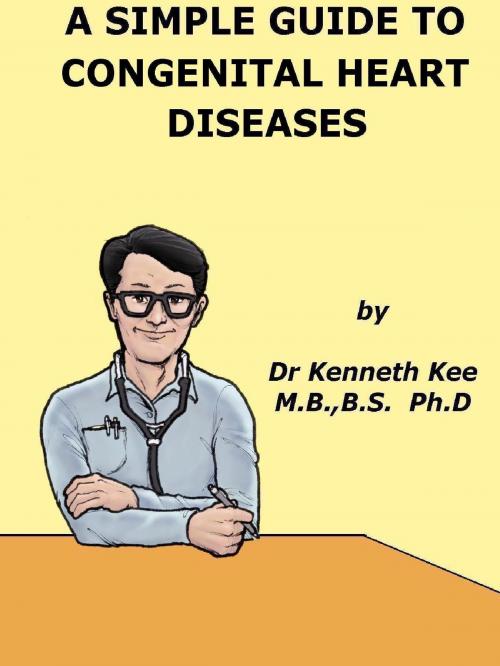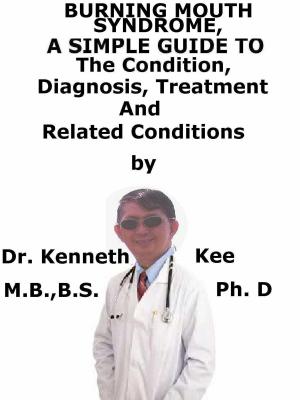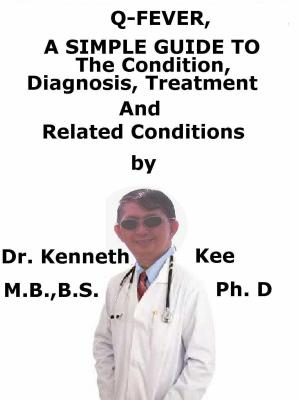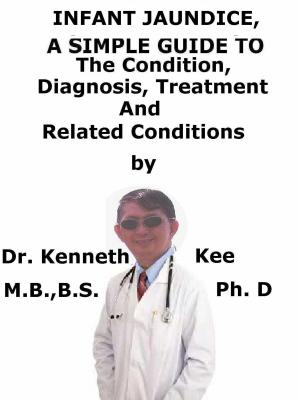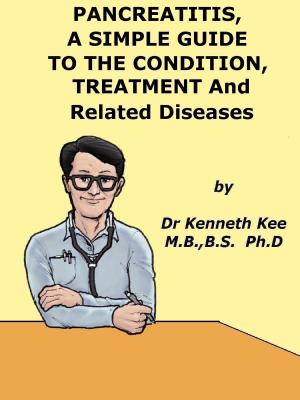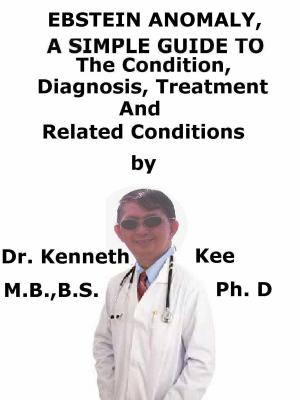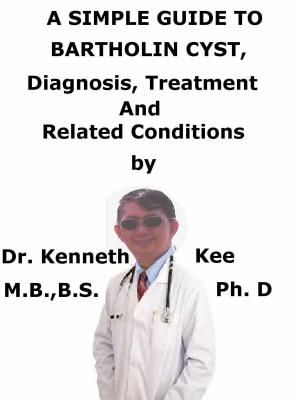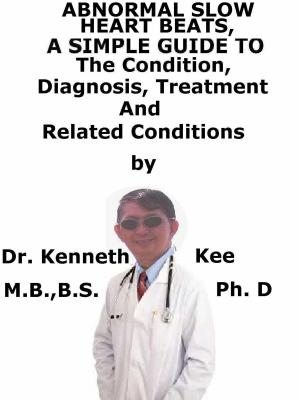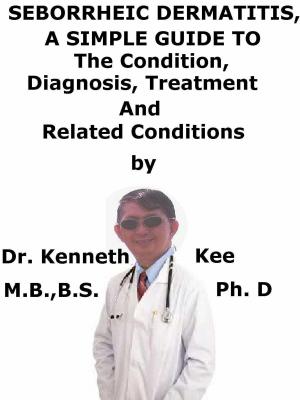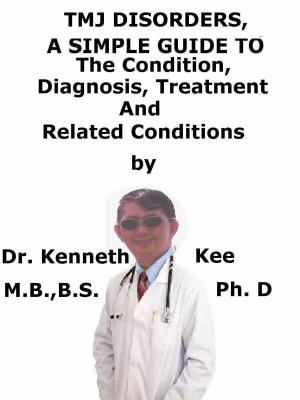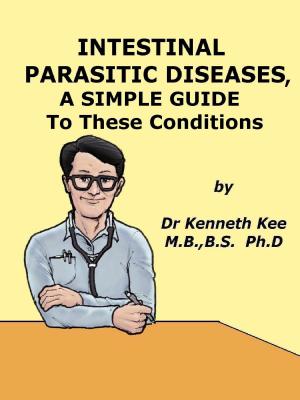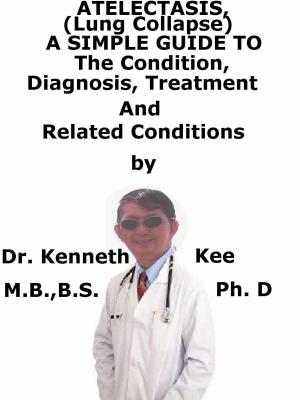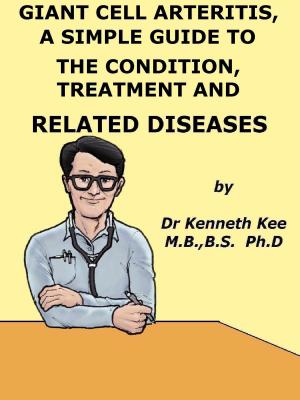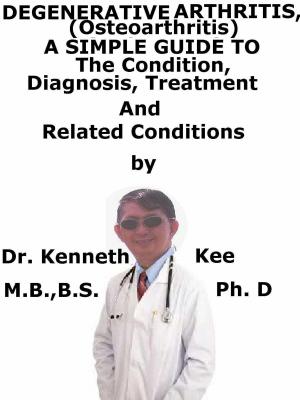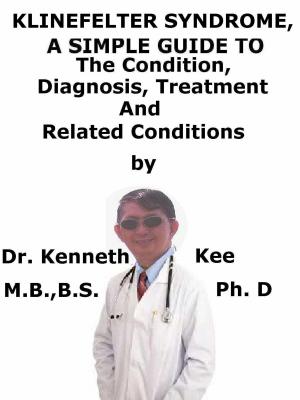A Simple Guide to Congenital Heart Diseases
Nonfiction, Health & Well Being, Medical, Specialties, Internal Medicine, Cardiology, Health, Ailments & Diseases, Heart| Author: | Kenneth Kee | ISBN: | 9781301399116 |
| Publisher: | Kenneth Kee | Publication: | October 13, 2013 |
| Imprint: | Smashwords Edition | Language: | English |
| Author: | Kenneth Kee |
| ISBN: | 9781301399116 |
| Publisher: | Kenneth Kee |
| Publication: | October 13, 2013 |
| Imprint: | Smashwords Edition |
| Language: | English |
What is Congenital heart disease?
Congenital Heart Disease is an abnormality or defect in the heart when the baby is born.
Who is at risk of having a Congenital Heart Disease?
Familial:
- Poor development of the heart during the first 3 months of pregnancy either due to genetics or family history.
External factors in development of the Congenital Heart Disease:
-
Poorly controlled blood sugar in women who have diabetes during pregnancy
-
Medications or drugs taken during pregnancy such as thalidomide (ASD,VSD)
Drugs such as retinoic acid for acne, other chemicals or alcohol -
Infections during the first three months of pregnancy such as Rubella virus or German measles (rare now because of rubella vaccination), other viruses or bacteria (VSD, PDA, valve disease)
What are the types of Congenital Heart Diseases?
Congenital heart disease (CHD) can describe a number of different problems affecting the heart.
It is the most common type of birth defect.
Congenital heart disease causes more deaths in the first year of life than any other birth defects.
Congenital heart disease is often divided into two types:
- Cyanotic:
Tetralogy of Fallot 10%
Transposition of the great vessels 10%
Ebstein's anomaly
Hypoplastic left heart
Pulmonary atresia
Total anomalous pulmonary venous return
Tricuspid atresia
- Non-cyanotic:
Ventricular septal defect (VSD) 20%
Atrial septal defect (ASD) 10%
Patent ductus arteriosus (PDA) 15%
Pulmonary stenosis 3%
Aortic stenosis 1%
Coarctation of the aorta 6%
Atrioventricular canal (endocardial cushion defect)
These problems may occur alone or together.
Most children with congenital heart disease do not have other types of birth defects.
What are the symptoms of Congenital Heart Diseases?
Symptoms:
Symptoms of Congenital Heart Disease depend on the nature and severity of the defect or defects:
There may be no symptoms until examined by a doctor during routine physical examination of newborn
-
A heart murmur may be heard during examination of the heart but may not indicate Congenital Heart Disease.
Other heart murmurs are typical of a narrowed pulmonary (PS) or aortic valve or other heart defect. -
Breathing difficulty on exertion or after feeding
-
Feeding problems -in baby with Congenital Heart Disease heart failure causes the inability of the heart to pump efficiently resulting in slow feeding and inability to finish feeds
-
Loss of weight may occur because of feeding problem
-
Cyanosis of the lips and tongue indicates insufficient oxygen is delivered to the body from the heart to the lungs. The lack of oxygen causes some tissues to appear bluish in color.
How is Congenital Heart Disease diagnosed?
The pediatrician will usually refer the affected baby to a pediatric cardiologist for further tests:
-
Diagnosis of Heart defect from birth
-
Chest X-Ray to see the shape of the heart
-
ECG to record rhythm and heart rate
-
Ultrasound scans of the heart (echocardiography) to check the flow of blood in and out of the heart and the nature and severity of the heart defect.
Most congenital heart defects are found during a pregnancy ultrasound.
Having medical care ready at the delivery can mean the difference between life and death for some babies.
TABLE OF CONTENT
Chapter 1 Congenital Heart Diseases
Chapter 2 Differential Diagnosis
Chapter 3 Ventral Septal Defect
Chapter 4 Atrial Septal defect
Chapter 5 Patent Ductus Arteriosus
Chapter 6 Tetralogy Of Fallot
Chapter 7 Coarctation of Aorta
Chapter 8 Transposition of Great Arteries
Chapter 9 Pulmonary Stenosis
Chapter 10 Aortic Stenosis
Epilogue
What is Congenital heart disease?
Congenital Heart Disease is an abnormality or defect in the heart when the baby is born.
Who is at risk of having a Congenital Heart Disease?
Familial:
- Poor development of the heart during the first 3 months of pregnancy either due to genetics or family history.
External factors in development of the Congenital Heart Disease:
-
Poorly controlled blood sugar in women who have diabetes during pregnancy
-
Medications or drugs taken during pregnancy such as thalidomide (ASD,VSD)
Drugs such as retinoic acid for acne, other chemicals or alcohol -
Infections during the first three months of pregnancy such as Rubella virus or German measles (rare now because of rubella vaccination), other viruses or bacteria (VSD, PDA, valve disease)
What are the types of Congenital Heart Diseases?
Congenital heart disease (CHD) can describe a number of different problems affecting the heart.
It is the most common type of birth defect.
Congenital heart disease causes more deaths in the first year of life than any other birth defects.
Congenital heart disease is often divided into two types:
- Cyanotic:
Tetralogy of Fallot 10%
Transposition of the great vessels 10%
Ebstein's anomaly
Hypoplastic left heart
Pulmonary atresia
Total anomalous pulmonary venous return
Tricuspid atresia
- Non-cyanotic:
Ventricular septal defect (VSD) 20%
Atrial septal defect (ASD) 10%
Patent ductus arteriosus (PDA) 15%
Pulmonary stenosis 3%
Aortic stenosis 1%
Coarctation of the aorta 6%
Atrioventricular canal (endocardial cushion defect)
These problems may occur alone or together.
Most children with congenital heart disease do not have other types of birth defects.
What are the symptoms of Congenital Heart Diseases?
Symptoms:
Symptoms of Congenital Heart Disease depend on the nature and severity of the defect or defects:
There may be no symptoms until examined by a doctor during routine physical examination of newborn
-
A heart murmur may be heard during examination of the heart but may not indicate Congenital Heart Disease.
Other heart murmurs are typical of a narrowed pulmonary (PS) or aortic valve or other heart defect. -
Breathing difficulty on exertion or after feeding
-
Feeding problems -in baby with Congenital Heart Disease heart failure causes the inability of the heart to pump efficiently resulting in slow feeding and inability to finish feeds
-
Loss of weight may occur because of feeding problem
-
Cyanosis of the lips and tongue indicates insufficient oxygen is delivered to the body from the heart to the lungs. The lack of oxygen causes some tissues to appear bluish in color.
How is Congenital Heart Disease diagnosed?
The pediatrician will usually refer the affected baby to a pediatric cardiologist for further tests:
-
Diagnosis of Heart defect from birth
-
Chest X-Ray to see the shape of the heart
-
ECG to record rhythm and heart rate
-
Ultrasound scans of the heart (echocardiography) to check the flow of blood in and out of the heart and the nature and severity of the heart defect.
Most congenital heart defects are found during a pregnancy ultrasound.
Having medical care ready at the delivery can mean the difference between life and death for some babies.
TABLE OF CONTENT
Chapter 1 Congenital Heart Diseases
Chapter 2 Differential Diagnosis
Chapter 3 Ventral Septal Defect
Chapter 4 Atrial Septal defect
Chapter 5 Patent Ductus Arteriosus
Chapter 6 Tetralogy Of Fallot
Chapter 7 Coarctation of Aorta
Chapter 8 Transposition of Great Arteries
Chapter 9 Pulmonary Stenosis
Chapter 10 Aortic Stenosis
Epilogue
